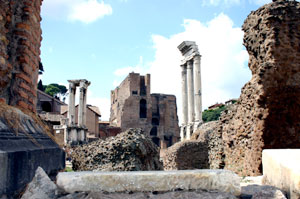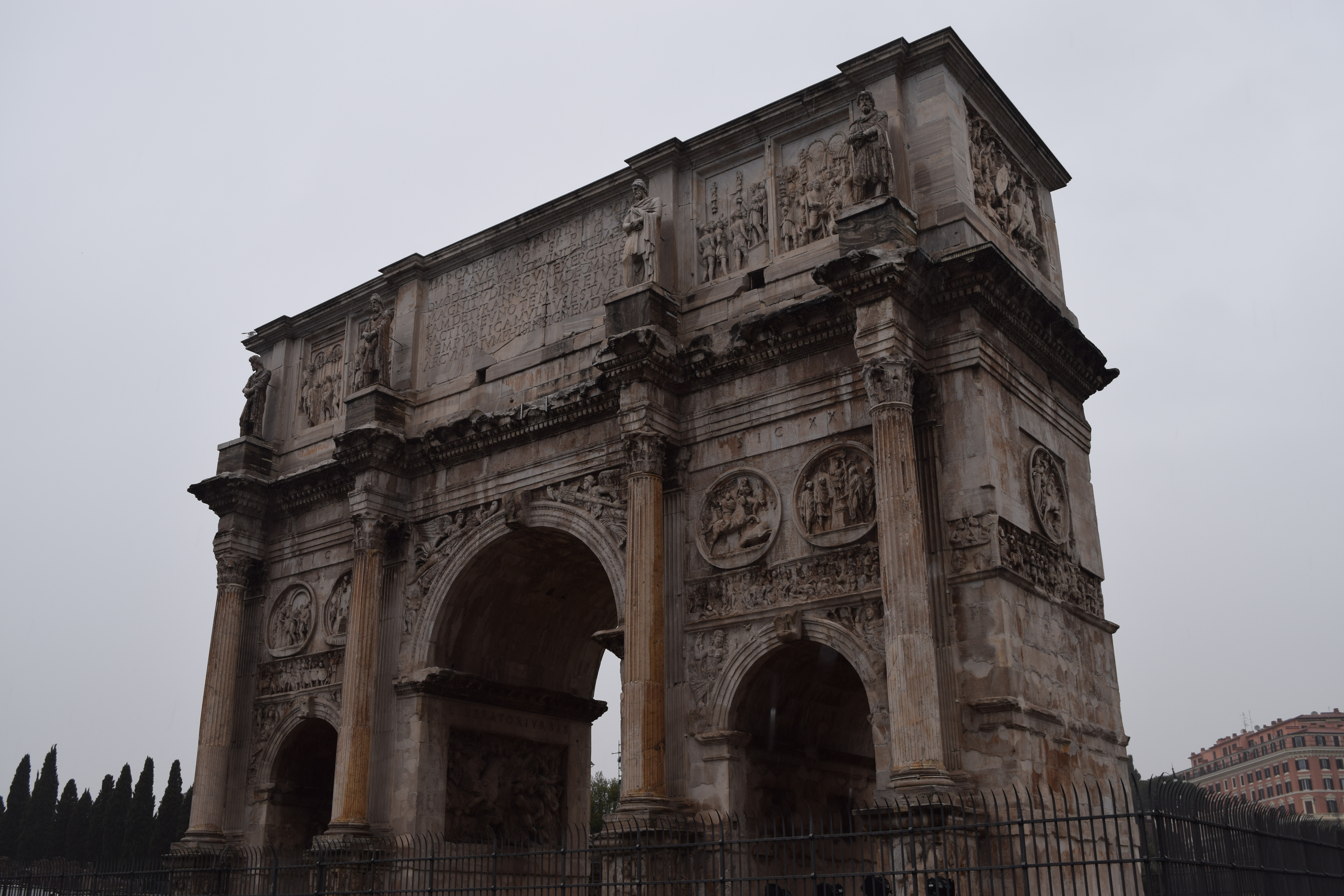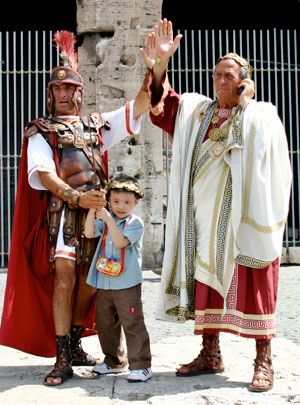ROME – I was only kidding when I told Rosa, a dear Roman friend, that I’d like to take a piece of the Forum home with me. The middle-aged Rosa, determined to fulfill my wishes, climbed over a small barrier separating us and 2,000 years of history and began searching through crumbled columns for my souvenir, all the time ignoring signs saying poachers would be prosecuted.
“Do you see any police?” asked Rosa when I pointed out the signs. “This is Rome – signs here are mere suggestions.”
A few minutes later, she returned with a small hunk of stone she’d broken off one of the columns that once held up the Roman Empire.
Visitors who are not impressed by the Forum ruins should check their pulse. Even in their crumbled state, the skeleton buildings remain impressive.

Above: The Colosseum is where the pulse quickens.
The Forum, after all, was the birthplace of Roman culture and the ruins tell the story of the rise of Rome from a tiny village to the seat of ancient power. Some scholars argue no empire, before or after, can match what was born here.
The Forum, also known as the Forum Magnum, is as old as Rome itself. Initially an open air market, the Forum quickly became a base of power – where emperors of the day erected great monuments to themselves to impress and win the loyalty of their subjects.
The symmetry, grace and size of each individual construction inspired the ideas of harmony, grandeur and strength. Tall granite columns still stand proud before what was once the Temple of Castor and Pollux. Delicately curving arches still grant entry to the Temple of Vesta and Roma. And the Basilica Julia, where cases were brought before magistrates for judgment, still stands solemn and stern. The small chamber where Julius Caesar was cremated after being stabbed 33 times by his "friend" Brutus, is a favorite gathering spot for today’s tourists.
The Forum sits in the shadow of the Palatine Hill and among its other ruins are the Arch of Septimius Severus and the three-columned Temple of Vespasian. Titus stands guard over the Temple of Saturn and the column erected in honor of the Byzantine emperor Phocas stands alone.

Above: Entrance to the Colosseum.
The main street running through the Forum, the Via Sacra – the Sacred Way – was where returning Roman legions paraded their prisoners and prizes after far off military victories. Monuments erected by Rome’s first king, Romulus, to ones built by Emperor Constantine, remain haunting reminders of that turbulent time in history.
The Forum began to crumble when the Roman Empire was divided into two parts at the time Constantinople became the new capital. From 395 AD onward, vandals defaced monuments and made off with valuable building materials. Mother Nature eventually buried the Forum and the area became a cow pasture for a time. Archeologists brought it back to life in the 15th century when excavation work began in Rome.
Without Rosa seeing me, I dropped the piece of stone next to a column as we headed to the nearby Roman Colosseum, arguably the greatest sports arena ever built.
Rosa, a history buff, informed me the great stadium was built to hold over 60,000 people and actually featured the first retractable roof – in the form of giant sails that were hoisted by seamen to protect the Roman crowds from the city’s blistering summer sun.
The Colosseum was started by the Emperor Vespasian in 72 AD and completed by his son Titus eight years later. It was built on the site of Nero’s lake, below his palace. Historic records tell us that over 10,000 animals where slaughtered in the 100 days of celebration that followed the Colosseum’s completion.

Above: Having some fun ourtside the Forum.
Time and the elements have not been kind to the Colosseum, and although still impressive, it’s a mere shadow of its former brilliance.
There are 80 arches on the first three levels of the Colosseum and it once featured a massive wooden floor – no longer there – that was covered with sand. It’s elliptical shape prevented the gladiators from retreating to a corner and allowed spectators a closer look at the action.
Most modern stadiums still use the design principles employed in the Colosseum. In fact, long before executive boxes became popular in modern-day arenas, the Colosseum featured its own form of luxury boxes – one made of marble for the emperor and others which housed senators and Rome’s aristocrats.
The Colosseum was used until 217 AD when it was damaged by fire. It was restored in 238 AD but two major earthquakes (442 AD and 508 AD) caused major damage They were followed by two more earthquakes - 847 and 1349 – and the building never recovered.
Much of the marble that made up the Colosseum was ripped from the façade and used in the construction of St. Peter’s Basilica in the 16th and 17th centuries. It was a fitting fate for a building where so many Christian martyrs lost their lives.
The Colosseum’s walls are now covered in flora, with as many as 420 species being identified growing between the stones at one time.
Today, the Colosseum has been turned into a bit of a sideshow, with modern day Roman soldiers offering to have their photographs taken with foreign tourists and cheap souvenirs being sold on the streets outside.
“Would you like a piece of the Colosseum to take home as well?” asked Rosa. I declined, electing to buy a plastic model of the great stadium instead.
About the Author
Marc Atchison is a veteran journalist and a seasoned traveller with more than 20 years of travel writing experience. As the former Travel Editor of the Toronto Star, Canada's largest newspaper, and now Editor-in-Chief and Senior Writer for TraveLife magazine (Canada) and travelife.ca, Marc has been to over 100 countries in the world. Japan is one of his favorite destinations and he's been there on numerous occasions.